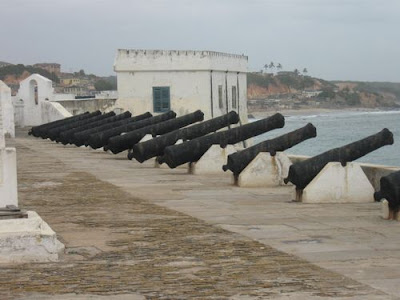The remains of fortified trading-posts, erected between 1482 and 1786, can still be seen along the coast of Ghana
The remains of fortified trading-posts established between 1482 and 1786 can still be seen along the coast of Ghana
In Accra , competition between the different European states was strong and having a fort at Accra Portugal , Spain , Denmark , Sweden , Holland , Germany and Britain
Ussher Fort is one of three European forts in Accra which have survived to the present day, the others being Christiansborg Castle Fort Crêvecoeur Fort Crêvecoeur Ussher Town Fort Crêvecoeur was once more destroyed in 1862, when an earthquake hit Accra Ghana Museums
In 1652 the Swedes built a lodge in Accra Fort Christiansborg , located on a rock cliff near the African town of Osu Fort Fredriksborg










Niciun comentariu:
Trimiteți un comentariu